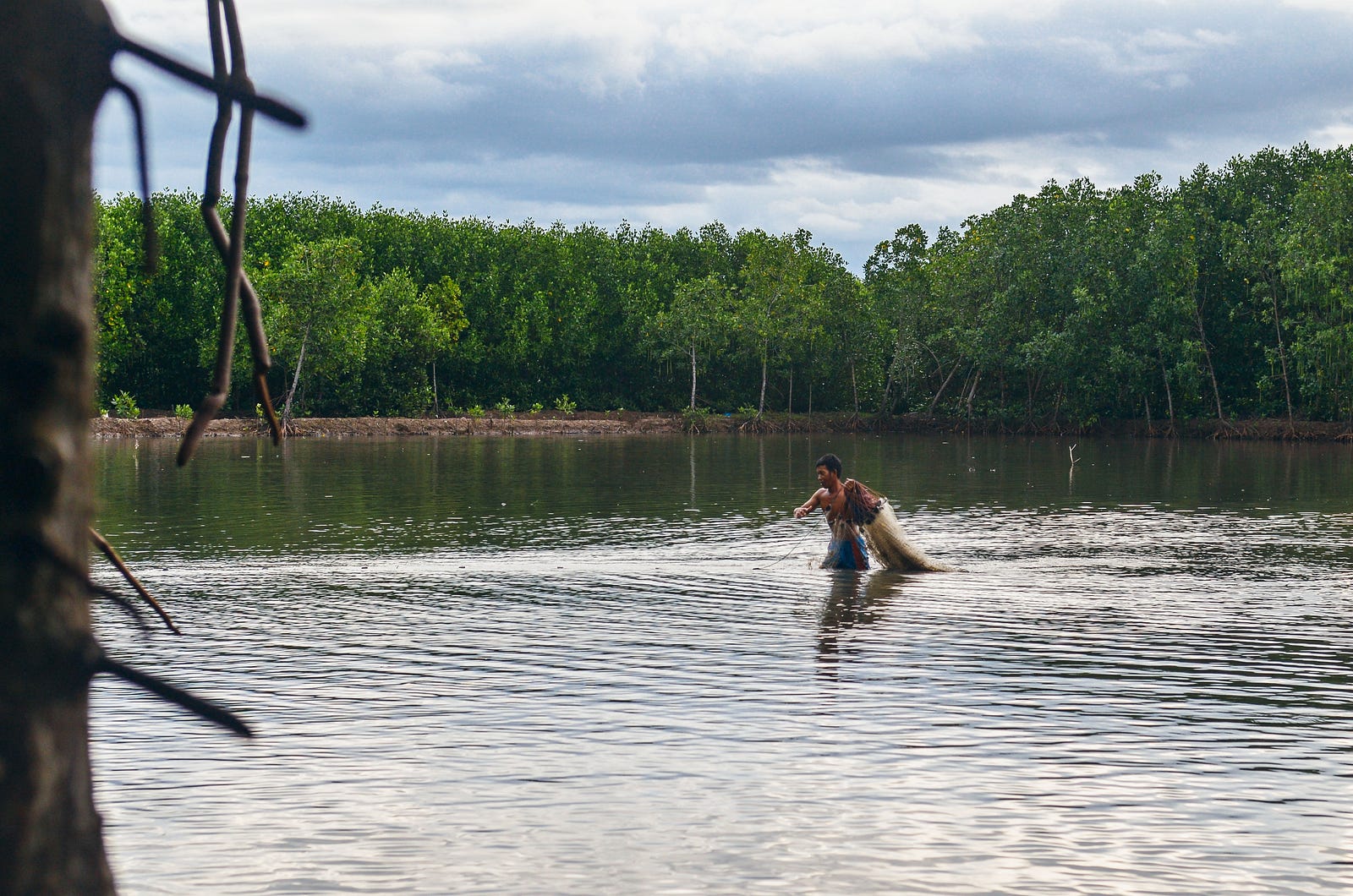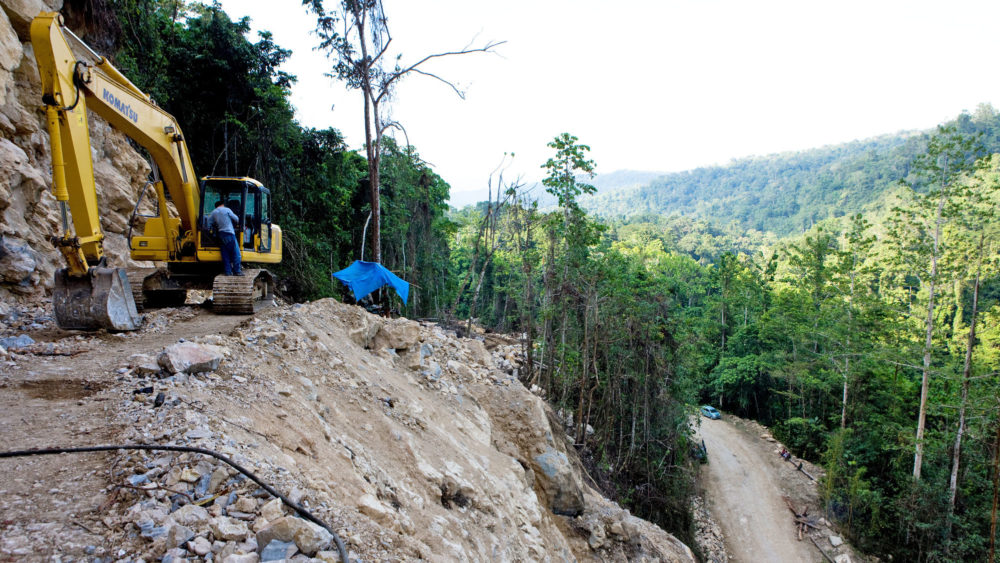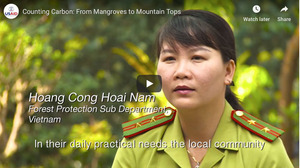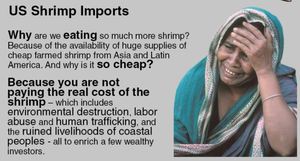FEATURE Yucatan student strives to create awareness for the preservation of the mangroves of Sisal  MEXICO – When Alexander Imanol Chan Chuc was told that his drawing could not participate in an international competition because it did not fit the horizontal format of the Children's International Mangrove Art Calendar 2019 calendar, he felt a great disappointment and a great sadness. But talent knows no barriers or obstacles, so – willing to show how he imagined an ideal natural environment in his native Sisal – Chan Chuc decided to create a new drawing, absolutely different, but of equal quality, as proof that he was chosen to illustrate to the month of February. Recently, the formal presentation of this calendar was carried out in the auditorium of the Mérida unit of the Center for Research and Advanced Studies (Cinvestav), where their respective acknowledgments were also given to both Chan Chuc and four other children whose drawings formed the images with which Yucatán participated for the first time in the contest. Children's International Mangrove organizes a drawing contest for children and adolescents each year, from which it selects 13 images that will make up the artistic calendar, which serves to raise funds and thus support various ecological causes of the world. READ MORE AFRICA The Human Element of Mangrove Management

TANZANIA – As global climate change continues to threaten coastal communities in the tropics, governments have increasingly focused on the promotion and conservation of mangrove forests for their protective qualities. Mangroves — trees and shrubs that grow in tropical estuaries — are among the world’s most productive ecosystems and, compared to other forest systems, have an impressive capacity to sequester and store carbon at high rates. They also serve as an important physical buffer, protecting coastal areas from storm surges and acting as “bioshields.” Despite these clear benefits, since 1980 the world has lost approximately 20 percent of its mangrove forests. With this in mind, there is a growing need to understand the factors, both biophysical and societal, that contribute to sustainable mangrove management. READ MORE African Coastal Forests need protection

BENIN – Over half of the tropical forests worldwide have been destroyed since the 1960s. Every second, more than one hectare of tropical forests is cut down or drastically degraded, according to the World Wide Fund for Nature (WWF), the international non-governmental organisation In Sub-Sahara Africa, Benin faces an accelerated loss of forest. According to the National Center for Remote Sensing and Ecological Monitoring (CENATEL), agricultural extension is driving the high conversion of forests and other natural ecosystems to farm land “In the space of 35 years, Benin has lost about 48 % of its dense forests,” says Luc Gnacadja, Benin’s former Minister of Environment. Not even one percent of the territory are still covered by forests The law protects various trees. They may not be cut, loped, grubbed or mutilated. These rules apply to slow-growing tree species that are needed for scientific or medicinal purposes, for example, as well as for many other classified species. “Despite these protective measures, 70 % of the people living in the rural areas cut wood for survival,” explains Romuald Djivohessou, an environment engineer and inventor based at Akpro-Missérété. READ MORE ASIA Current threats and future hopes for the greater Mekong’s mangroves

VIETNAM – While Southeast Asia is known as one of the world’s fastest-growing economic regions, home to booming metropolises like Bangkok, Ho Chi Minh City and Kuala Lumpur, it also hosts some of the planet’s most vital ecological areas. The Greater Mekong, which includes Vietnam, Laos, Cambodia, Thailand and Myanmar, is key to this environmental vitality. According to the WWF, more than 2,200 new vertebrate and vascular plant species have been discovered in the region since 1997. In the 1970s it was the most densely forested area on Earth. Since then, a third of that tree cover has been lost. Another third is expected to disappear by 2030. Urbanization, land use changes and agribusiness such as palm oil and rubber have devastated forests, along with the wildlife species which rely on them for habitat. READ MORE Group sounds alarm as industrial dumping shrinks last mangrove forest

MALAYSIA – The last mangrove swamp in Batu Maung here is now under threat of being turned into a dumpsite as tracts of the land were filled with industrial and construction waste. Sahabat Alam Malaysia (SAM) and Penang Consumers Association (CAP) said the mangrove forest was the only green lung left in Pekan Baru Batu Maung, just next to the Bayan Lepas Industrial Park. “There are only about 20ha of remaining mangrove forest here due to development in this area so it must be preserved and protected for our future generation,” said SAM and CAP research officer S. Mageswary during a site visit to the area with the media. About 15 per cent of the 20ha mangrove forest is now barren and buried under mounds of rubble, rubbish and construction waste. She said the land belonged to the federal government and was under the supervision of the Fisheries Department. “We don’t know who is dumping waste here but it is surprising that lorries can bring in waste and openly dump it on government land,” she said. READ MORE Loss of mangroves, an invite to climate catastrophes

INDIA – Tropical dry evergreen forests and the mangroves on the east coast of peninsular India have remained more accessible to humans as compared to wet evergreen forests and the mangroves on the west coast. Climate-related catastrophes like cyclone and tsunami are hitting the east coast more frequently and bringing misery to the people. Regions all along the coast, from the Sundarbans to Kanyakumari, have steadily been losing natural dry evergreen forests as well as mangrove vegetation. Communities are increasingly resorting to shrimp culture, fruit orchards, plantation crops, salt pans, etc. Even village cattle swim across creeks and graze in mangrove vegetations, especially Avicennia marina. Further,Avicennia officinalisare also found to be degrading because of high salinity. Local communities are also dependent on mangrove forests for firewood. As part of Management Effectiveness Evaluation team for studying some sanctuaries and national parks in Tamil Nadu, I along with Dr P S Easa, former director of the Kerala Forest Research Institute, visited Pichavaram mangroves in the Cauvery delta, nearly 200 km south of Chennai. Mangrove plants grow in hostile environmental conditions like high salinity, oxygen-deficient water-logged soil strata, tidal pressure, strong winds and sea waves and exhibit evolved morphological and physiological adaptations. READ MORE Thailand's Mangrove Reforestation Activity to Celebrate Its 100th Anniversary

THAILAND – NCH Thailand, as part of NCH’s Global CSR initiatives in celebration of NCH 100th year anniversary and in cooperation with Foundation for Environmental Education for Sustainable Development Thailand (FEED), organized a Mangrove Reforestation activity on 19th January 2019 at Bangpu Recreation Center, Samut Prakarn Province, Thailand. This Mangrove Reforestation was a part of the event marking "the 100th Anniversary of NCH". In an honor of NCH 100th year anniversary, NCH announced that globally all employees from all 50 countries will volunteer their time to contribute to their communities and to complete more than 100 different CSR activities in total across the globe by 2019. Mr. Rod Arellano, NCH Thailand Country Manager, said "I am very glad to be a part of this Mangrove Tree planting activity, the event is very meaningful. Our associates enjoyed the fun group activities and planting mangrove seedlings for environmental sustainability.” READ MORE Highway Megaproject Tears at the Heart of New Guinea

INDONESIA – The Indonesian government is building a 2,700-mile road network on the island of New Guinea, opening up some of the world’s last great tropical rainforests to development and threatening unique indigenous cultures. Can international pressure force Indonesia to scale back this megaproject? These unique rainforests are being carved up by a massive, ill-advised, and exceptionally risky road-building scheme. The Trans-Papua Highway will sprawl like a massive spiderweb over much of the Indonesian-ruled, western half of New Guinea, known as Papua or West Papua. Totalling 2,700 miles in length, this highway network will penetrate deeply into densely forested or remote mountainous regions to increase access to minerals, fossil fuels, timber, and land for agri-business ventures, including vast palm oil plantations. Many road segments will traverse precariously steep, virgin terrain. READ MORE AMERICAS Marvellous Mangroves curriculum Suriname & French Guyana Expansion

Suriname – 2018 saw Marvellous Mangroves (MM) continue its work on the northeast coast of South America – in Suriname and French Guyana. Spring saw workshops in Coronie and Nickerie led by Mangrove Action Project’s (MAP) education director Martin Keeley. In Coronie, trainee tour guides had a refresher course on Marvellous Mangroves – covering topic areas which supplemented those of the previous fall. The workshops were also supplemented by in depth tour guide training from executives of the United Tour Guides Association of Suriname (UTGS), Errol Gezius and Yves Tjon following the same pattern given the previous fall in Commewijne and Coronie. In Nickerie the first workshop was with St. Alfonsus School and the second for tour guides, gamekeepers, executives and professionals from regional government agencies. The second workshop not only featured extensive MM activities from the water cycle to microscopic studies of micro-organisms from mangrove ecosystems, but an in-depth tour guide program conducted by Messrs. Gezius and Tjon. Following the Suriname workshops, Mr. Keeley travelled to French Guyana where he met with several local NGOs and government agencies including the Conservatoire du Littoral to lay the groundwork of bringing MM to that country. Agreements were made with several of these agencies and a MM co-ordinator for French Guyana established in the person of Lucile Dudoignon of Koté Forêt. READ MORE Insect collapse: ‘We are destroying our life support systems’

COSTA RICA – Earth’s bugs outweigh humans 17 times over and are such a fundamental foundation of the food chain that scientists say a crash in insect numbers risks “ecological Armageddon”. When Lister’s study was published in October, one expert called the findings “hyper-alarming”. The Puerto Rico work is one of just a handful of studies assessing this vital issue, but those that do exist are deeply worrying. Flying insect numbers in Germany’s natural reserves have plunged 75% in just 25 years. The virtual disappearance of birds in an Australian eucalyptus forest was blamed on a lack of insects caused by drought and heat. Lister and his colleague Andrés García also found that insect numbers in a dry forest in Mexico had fallen 80% since the 1980s. “We are essentially destroying the very life support systems that allow us to sustain our existence on the planet, along with all the other life on the planet,” Lister said. “It is just horrifying to watch us decimate the natural world like this.” READ MORE Back to Top | ACTION ALERT Halt further destruction of primary mangrove forests in the Maldives. We are urging you to write letters to the recently elected president of the Maldives and his environmental minister View Sample letter Save Pulau Kukup National Park – second largest mangrove island in the world. Sign The Petition Video: Mangroves for the Future – A look bacK. As the latest phase of Mangroves for the Future (MFF) draws to a close, this video highlights some of the project’s most successful initiatives – from local women supporting national park management in Viet Nam to an island in the Maldives that has become a model for waste management, and everything in between. View Here Making the case for Emergency Climate Change Action 
Counting Mangroves

Placencia mangrove workshop teacher's poem Volunteer with MAP – LEARN MORE Watch Children's Mangrove Art Calendar Promo 2019 Click Here  
MAP 2019 Children’s Calendar available now CLICK HERE You can help ensure that the knowledge and skills needed to conserve and restore mangroves is preserved in coastal communities READ MORE WANT TO GET INVOLVED?
Follow and Join MAP!    


VOLUNTEER OPPORTUNITY
MANGROVE ISSUES Want to learn more about mangroves?
Our short presentation will give you a better understanding of the issues we are working to solve. WATCH PRESENTATION What is CBEMR? Easy to follow fact sheet – CLICK HERE What is EPIC? – The Ecosystems Protecting Infrastructure and Communities (EPIC) project: the role of ecosystems as protective barriers against climate induced hazards MANGROVES APP AVAILABLE
A pictorial field guide for easy identification of various mangrove species and learning about the mangroves ecosystem. CLICK HERE View MAP’s uploaded Videos at MAPmangrover’sChannel
Question Your Shrimp Consumer/Markets Campaign!
WATCH VIDEO Mangrove Restoration in Asia – Watch Short Video The Value of Mangrove Forests View Video CBEMR Experience Exchange MAP 2017 English Subtitles
VIEW THE VIDEO Mangroves: Guidebook to Malaysia – Click Here
Mangrove rehabilitation in Asia – Local Action and cross-border Transfer of Knowledge for the Conservation of Climate, Forests and Biodiversity VIEW VIDEOS HERE SHARE MAP'S VISION
CLICK HERE to watch short introductory video. Together we can work "at the roots of the sea". Our short documentary, Reducing the Risk of Disaster through Nature-Based Solutions : Mangroves

Exclusive Interview with Alfredo Quarto, Co-Founder and Executive Director of Mangrove Action Project – See more
Marvellous Mangroves Curriculum The Marvellous Mangroves Education Forum is an online hub for those utilizing the Marvellous Mangroves (MM) Curriculum. It gives students, teachers and anyone interested in mangroves, the opportunity to learn and share ideas themed around the curriculum, to connect and communicate with others around the globe whilst exploring mangroves from your computer or on the go. VISIT 
The award-winning Marvellous Mangroves (MM) curriculum educates children on the importance of mangroves and their ecological functions, teaching them about modern challenges and mechanisms for sustainability. VIEW VIDEO 
MAP Education Director Martin Keeley’s most recent book is Marvellous Mangroves: Myths and Legends, a compilation of stories from “Mangrove Peoples”—those who live on shorelines where mangroves thrive—from around the world. READ MORE Marvellous Mangroves Curriculum in Bangladesh – WATCH VIDEO
MARVELLOUS MANGROVES IN BRAZIL
En Portuges 
Marvellous Mangroves – A Curriculum-Based Teachers Guide. FOR MORE ON MAPs AWARD WINNING CHINA MANGROVE CURRICULUM VISIT

VIMEO SHOW
VISIT OUR "MM" WEBPAGE Check out our presentation for more details on Marvellous Mangroves Read this 10 page history of the development of MAP’s educational curriculum VIEW DOCUMENT
Article in Canada's Green Teacher Magazine – Read More
FREE MAP Mangrove e-cards CLICK HERE

MAP’s e-Cards offer you a unique way to spread the word about MAP’s good works, while sharing beautiful photographs of the mangroves
Donate to MAP via Paypal
Giving could never be easier

It’s the action, not the fruit of the action, that's important. You have to do the right thing. It may not be in your power, may not be in your time, that there'll be any fruit. But that doesn't mean you stop doing the right thing. You may never know what results come from your action. But if you do nothing, there will be no result. —Mahatma Gandhi Green Planet Fundraising Assists MAP – LEARN MORE
Volunteer Opportunities with Mangrove Action Project CLICK HERE
"Question Your Shrimp" Campaign Question Your Shrimp- Don't Buy or Sell Imported Tropical Shrimp! Sign the Petition Learn more about the affects of the shrimp industry on mangroves by visiting our blog
Editor’s Note: Mangrove Action Project’s Executive Director, Alfredo Quarto was interviewed about shrimp by Green Acre Radio’s Martha Baskin
LISTEN TO INTERVIEW Information sheds clear light on shrimp-mangrove connection

SEE DETAILS MANGROVE/SHRIMP Sign the Consumer's Pledge to avoid imported shrimp
Not yet a MAP News subscriber?
Click here to subscribe. Note to Our Readers:We strive to keep active links in our newsletter. However, due to circumstances beyond our control, occasionally links to stories may become broken. If you find a link to a story is not functioning, please cut and paste the headline into your browser search bar. In most cases you should be able to locate the original story.
Help Mangrove Action Project through your recycled E-Waste. List of Accepted E-waste Items:
Injet Cartidges, Cell Phones, Pagers, GPS, Radar Detectors, Mobile Hot Spots, Calculators, eBook Readers, iPods/MP3 players, Digital/Video Cameras/Camcorders, PDAs, iPads/Tablets/Laptops, Video Game Consoles, Handheld Video Games
Visit the Mangrove Action Project recycle website Click on the recycle button then click on the Download Shipping Label, and follow the instructions. 
|





























